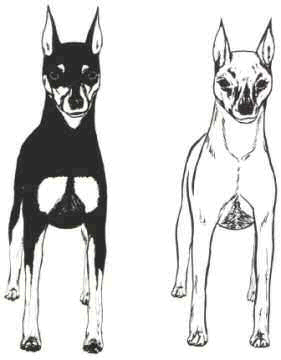
This is a placeholder text
Group text
by vk4gsd on 01 July 2013 - 21:07
by vk4gsd on 01 July 2013 - 22:07
so i guess all thosedog brokers, military handlers and LEO have been duped when the effectively displaced the gsd in favor of the mal/ds.
those stupid dutch have no idea producing those smaller dogs for knpv. bad guys have just run riot now they have to fight off the mals/ds as they can just brush them aside with their bare hands and continue on their way.
please!!!!!
spot how many gsd in these vids, see how far you run with one of these little dogs clamped on yr butt;
http://www.youtube.com/watch?v=HykHzPtrsAs
http://www.youtube.com/watch?v=OPXL33bufn0&list=PL07E797A3B93E1C29
http://www.youtube.com/watch?v=5CQeVLAiY4w&list=PL07E797A3B93E1C29
by GSD Lineage on 01 July 2013 - 22:07
Snip: Dog Gait
The Miniature Pinscher, for example, must have what is called a hackney gait, reminiscent of the gait of a horse.
Snip 2:
Hackney Horse:
They are an elegant high stepping breed of carriage horse that is popular for showing in harness events. Hackneys possess good stamina, and are capable of trotting at high speed for extended periods of time.
Blackbuck Antelope Prance by the campsite
by vk4gsd on 01 July 2013 - 22:07
i know you are not promoting cruelty, it is sometimes our innocent and indirect actions like admiring the finished product as a by stander that encourages these cruel practices to continue.
by GSD Lineage on 02 July 2013 - 01:07
vk4gsd PM me any reports of abuse as to hackney gait training method, because I looked that up before posting to be sure I was posting a natural gait. Keep it to PM and if it is true then I will take the hackneys out and place the loose dutch harness brood mare in their place.
by SitasMom on 02 July 2013 - 10:07
Its a conformaiton thing.
by Blitzen on 02 July 2013 - 10:07
Forequarters - SHOULDERS clean and sloping with moderate angulation, coordinated to permit the hackney-like action. Elbows close to the body. LEGS - Strong bone development and small clean joints. As viewed from the front, straight and upstanding. PASTERNS strong, perpendicular. DEWCLAWS should be removed. FEET - small, catlike, toes strong, well arched and closely knit with deep pads. NAILS thick, blunt.

Discussion:
The forechest should be developed enough to be seen when the dog is viewed from the side. The clean, sloping shoulders have moderate angulation. To permit the hackney-like action, the rear is slightly more angulated than the front. Steep shoulders are a common deviation. Loaded shoulders are undesirable.
by Blitzen on 02 July 2013 - 10:07

Soring doesn't produce a hackney gait. Horses and dogs with high stepping hackney gaits do so because they have moderate to little shoulder lay back, short upper arms, and shoulder joints that do not open fully. They are bred that way. There are literally hundreds of photos right here of GSD's with a hackney gait used to promote kennels and sell dogs and puppies. I suppose the owners think it's correct, it's not. In the dog world we usually call those dogs pounders or padders. They lift their front legs too high for a number of reasons, but their "wrists" don't bend like a hackney horses'. The horse is the picture is a walking horse that has been sored. Note he is fully opening his shoulder joint and his leg is fully extended.

by mollyandjack on 02 July 2013 - 10:07
by Hundmutter on 02 July 2013 - 10:07
photographed with the grass show ring background, and
is slightly more in formal 'stance' than the others, looks
to have a reasonable 'shape' of topline. None of them has
been 'stood', ie set up in the exagerated Show pose with
the leading back leg right under them. Reminiscent of many
older photos of earlier dogs, which ppl like to use to point
out their arguments against the aesthetics of the structure
and supposed degree of curve to the croup of the 'modern' dogs !
Contact information Disclaimer Privacy Statement Copyright Information Terms of Service Cookie policy ↑ Back to top





